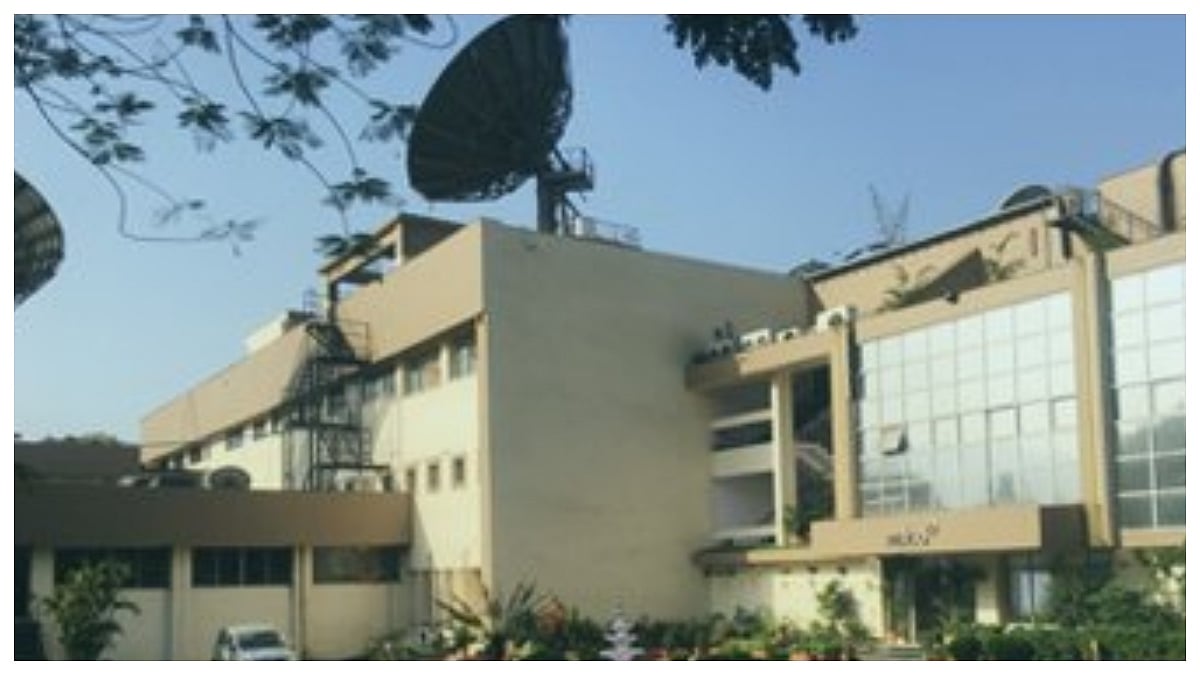After operating in stealth mode since a couple of years now, Bengaluru-based start-up Orxa Energies is set to unveil the first look of India’s first electric performance bike, ‘The Mantis’ that can do 200 kilometers in a single charge, can attain a top speed of 140 kilometers per hour (Kmph) and boasts of a battery swapping feature.
Ranjita Ravi, co-founder, Orxa Energies, in conversation with Ashish K Tiwari, speaks about the company’s business that was bootstrapped in August 2015, their association with Airbus' accelerator programme, idea of electric performance bike, lithium ion battery technology and more. Edited excerpts...
The bike being unveiled in Goa today (December 06, 2019) is a finished product or you plan to refine it further for the commercial launch later next year?
Unveiling The Mantis is something that’s very close to what’s it going to be in the final production version. There could be some refinements closer to the commercial launch. Small technical things like maybe increase the battery capacity a bit more. We’ll have to see how that happens.
Your company has been working on some developments for Airbus. What exactly are you doing for them?
We were a part of the Airbus BizLab, an accelerator programme by the European multinational aerospace corporation. They have four Airbus BizLab locations worldwide and Bengaluru is one of them. Essentially, what we wanted to work with them was in the battery space.
So aspects like development, electronics and things like that around the whole battery technology. This was back in back in 2017-18. There are a few ongoing projects we are still working on for them but I’m not at liberty to discuss about these projects.
This idea about a performance bike in the electronic vehicle (EV) segment happened before the Airbus BizLab development or after?
Actually the company was started keeping the EV performance motorcycle in mind. I think there are quite a lot of synergies that our team has with aerospace majors like Airbus. That’s what led to us teaming up and firming this alignment. If you think of a performance motorcycle and aerospace application, their exigencies are very similar.
There is very less space available, it has to be of a very high performance and be very light-weight. So volume availability is less, there are strict weight restrictions and it has to deliver a great performance. That’s how we began working with Airbus BizLab.
We have other aerospace clients as well and are working with them on a very research and development (R&D) stage on a few pilots. Basically, our battery technology is very light despite being rugged and gives a very good performance. So there is a strong alignment between our product and the demand scenario in this segment.
So is the battery technology your primary business or EV performance bikes?
The motorcycle is primary business. We started doing our own battery packs because there were no battery packs that could meet our requirements for the EV performance bike. In the initial stages, we thought off-the-shelf battery packs could be used but that was not the case. That’s when we started work on developing our own battery technology.
The requirements for the two industries are similar and since my co-founder and chief technology officer had extensive experience in this industry we saw the application immediately.
That’s how developing the battery technology came into play for us. It’s already a separate business vertical for us. The lithium battery space is getting very crowded with too many players homegrown and international joint ventures (JVs) claiming all sorts of things.
Competition is good and we think good technology will stay while bad technology will die a natural death. It’s also very important because the level of technology and R&D is newly developed.
Right now, I think India has that once in a generation opportunity in this space. People keep talking about how we lost out on a whole lot of things in the past.
If you look at the entire EV ecosystem though, I think we have a great chance to the take lead. The EV space in India is not going to develop the way it did in Europe or for that matter any other nation where EV related developments have already progressed to a certain level. We need India-specific technology and there are a lot of people working on it at present and that’s very good.
NITI Aayog estimates the battery pack industry to be about $9 billion by 2025 and that’s just for automobile category. So, the market potential is huge and a lot of people in India need to make a lot of noise about their achievements in the EV technology space.
People in India should be working on various EV technologies because it’s too early for standardisation. There should be different lithium ion and related chemistries, people working on various types of battery packs whether it is charging, swapping and so on.
I think a lot of noise needs to be made until 2025 post which efforts will have to be made to figure out a business model around what works best for India. Thereafter it will be a completely new phase of growth for India in the EV technology space.
Do you have intellectual property (IP) rights on the battery technology?
We have multiple proprietary IPs in each of our battery packs. The battery management systems and controller systems are our own. The engineering and design for the battery pack is all in-house.
The product is rugged, strong and does not require active cooling and still delivers in terms of performance. Some of the IPs have been filed already and others in the filing stage.
Tell us about the unique aspects about your performance motorcycle. Everything from the wheel to the handle bars for the bike has done by our team of engineers and designers. A lot of work has been done around its frame. Electric vehicles have to be lighter, faster and stronger.
We are working on a frame architecture that’s very unique to us in such a way that it’s not only a design functional element but is also very different from what some of the other people are attempting to do in the market.
The design helps in a big way to facilitate battery swapping while giving the bike attractive look and making it strong. Our battery pack has a capacity of nine kilowatt hours (kwh) and there are six modules giving the bike a 200 km range in a single charge.
A lot of engineering has gone into how the battery swap works and how we are going to fit a 9kwh battery in it. We started customer pilots of our battery packs mid-2018 and the response has been phenomenal.
One customer put the battery pack in a plastic basket under his commercial vehicle and did a 50-60 km run without any issues. Another customer in north India used the battery pack on his passenger two-wheeler driving in 50 degree Celsius weather conditions.
Our battery packs are on passive cooling which is another unique feature. The battery back has very rugged ‘Made for India’ design. The customer pilots were done across two- and three-wheelers, commercial vehicles, aerospace systems. So 2018-19 has been a year of testing and pilots and 2020 is when EVs will actually pick up and run.
How big is your team at Orxa Energies?
We are just a 15-member team and most of our engineers and designers are in the 23 to 30 year age bracket. One of our designers builds custom motorcycles. We have a mechanical engineer who builds go karts. Our electronics engineer is a semi-professional biker and does robotics on the side.
The team is our strongest asset and having such a lean team gives them the opportunity to do a lot of work. Our designers are thinking about engineering work and manufacturability of the design, something that’s quite unique in the value chain and it’s very hard to find designers who can actually do that.
This is also the reason we able to do a lot of things in-house. The team also work s very closely with vendor partners to ensure the casting and related things are done to specifications and in the best manner possible.
Have you got any external funding for the bike and battery pack business?
We have raised money from an angel investor and an institutional investor in the last couple of years. We don’t make our investment numbers public as it tends to distract from the actual work that’s happening and the value the company is adding.
The commercial launch happens sometime in mid-2020. How are you going about producing the bikes?
We are already working with quite a few vendor partners for the components for the bike and the structure for the battery packs. However, the final assembly, quality check, etc. for the bikes will be done by us. In fact, we are already doing the battery assembly in-house.
We have a fair idea of the ecosystem, how and where will everything get manufactured as well as partners who will work with us in the process. Currently, we have a small assembly facility because we were only doing pilots however we will now set up a large one wherein the bikes as well as the battery packs can be assembled.
What’s your pricing strategy for The Mantis? And who are the target buyers?
The final price will be decided closer to the commercial launch. We are estimating it to be anywhere between Rs 3 Lakh and Rs 4 lakh. The consumers will largely be those looking to own a performance bike.
It’s not a mass market vehicle hence the positioning will be premium. We will largely use the online channel and other customer experience programmes to reach the target audience.
Could you also give is a sense of the market size for this product?
The category of performance motorcycles market in India has been growing 30% year-on-year since the last four years. The bikes in this category will mainly comprise those with engine capacity of 200cc and above. It’s a very aspirational product and falls in the discretionary spending category hence there is very little impact of slowdown in this segment.
Between the bike and battery packs, which one will be a larger business vertical for the company?
Both are equally important as one cannot exist without the other. In fact, if you consider any EV, batteries are 60% of the entire cost of the vehicle. So battery is very critical and more so for us to have it in-house. Generally speaking, battery packs is a problem that needs to be solved for a lot of people.
Our battery packs are small, modular and can be swapped; it’s a solution that’s interesting for many people. Our battery pack can be charged at home in three-and-a-half hours and that gives the bike rider a 200 km range per ride.
Also, the battery pack has huge capacity at 9kwh so it will not have to be charged very often and that’s a huge advantage. We are collecting usage data from our customers and will be able to freeze on what sort of warranties can be offered. Generally, lithium ion batteries for automotive use can last for five to eight years, depending on the usage.









